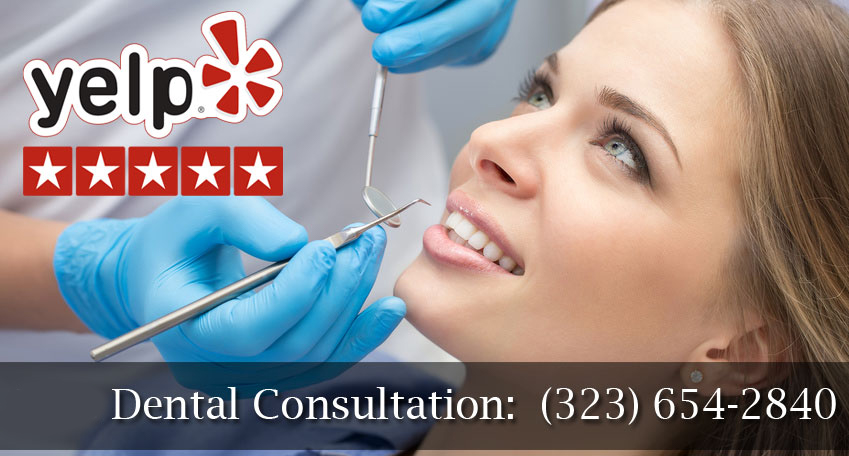Oral health is essential to general health and hygiene. Most common oral diseases include tooth decay, gum disease, and bad breath. Other diseases such as oral cancer can also plague the mouth, but fortunately, most of these conditions are very treatable and manageable if diagnosed early enough. In this article, we will explore the common types of dental and oral diseases, their signs, and symptoms, as well as treatments.
Facts about dental and oral health
As humans, we are susceptible to various oral diseases that can cause us pain and discomfort.
1. According to the Centers for Disease Control and Prevention (CDC), Americans lose a collective average of 560 million days of work each year due to oral health problems.
2 When the bacteria accumulate on the teeth, it can lead to tooth decay.
3 Plaque can also give off various toxins if left on your teeth for an extended period.
4 These toxins eventually make their way into your gums, causing them to become inflamed.
5 Gingivitis is one type of inflammation that occurs when tissues lining the teeth or gums are overly sensitive or swollen.
6 While many people believe that only older individuals suffer from gum disease, this condition can affect any individual who neglects oral hygiene around their front teeth.
7 Despite this being a common preventable oral disease, it is estimated that around 50% of adults will suffer from some form of gingivitis in their lifetime.
8 Research has shown that the more plaque and tartar you have on your teeth, the greater your chances are of developing this condition. It is believed that inflammation, swelling, and bleeding may occur when bacteria accumulate in more significant than average amounts within these areas due to poor brushing or food particles left behind after eating.
9 Over time, gingivitis can lead to periodontitis which results in tissue damage around the teeth. This condition requires treatment by a professional because, over time, it can erode bone tissue surrounding the jaw.
Symptoms of dental and oral health problems
Signs of dental conditions are visible to the naked or untrained eye. Many times, individuals will mistake other visible symptoms for being signs of oral disease. However, many issues that affect other parts of your body can also affect your mouth and teeth. Some other symptoms to watch for include:
– Cracking, tender or bleeding gums
– Swelling and redness of the gums
– Gum Disease ( Gingivitis )
– Bad Breath ( Halitosis )
– Discomfort while chewing
– Sores that won’t heal
– Toothaches
– Lack of energy
– Feeling exhausted.
Causes of dental and oral problems
The cause of many types of oral and dental issues can be traced back to unhealthy eating habits that lead to tooth decay. It is essential to realize that not all cavities come from sugars and starches; instead, it may result from drinking too much soda or other sugary beverages. Moreover, poor brushing can also contribute to drinking through a straw because the action helps direct food particles towards your teeth. If you cannot brush immediately after eating, drinking water can help flush out trapped food particles before they become dry and turn into plaque.
Prevention, diagnosis, and treatment of oral diseases
To help prevent dental problems, individuals can cut back on eating sugary foods or drinks. You should also avoid drinking soda because it is very acidic. It is recommended to brush your teeth at least twice per day after eating and once before bedtime. If you don’t have a toothbrush, you should try rinsing with water as often as possible. In addition, if you need to cut back on brushing for extended periods, make sure to schedule a checkup by a dentist. Lastly, many early signs of gum disease can be stopped before they put your health in jeopardy if caught in time. With that said, there are various treatments available depending on how far the condition has spread.
Diagnosing dental and oral diseases
It is recommended to see a dentist if you believe there is an issue with your teeth or gums. During the appointment, they will check for any signs of dental disease and make sure that everything is in order. If no issues are found, the patient may be advised to follow up within six months, especially if they have several signs of tooth decay. In many cases, no treatment will be needed. However, some individuals may require root canals, crowns, or other procedures to restore their oral health.
Below is a procedure that the dentist may use to diagnose problems with your gums by using a plastic probe.
*Gently place the end of the tool into one of the pockets around the teeth.
– Move it around in all directions, checking for tenderness or pain.
Several probes will be used during this procedure, including periodontal, curettes, and explorer. This will depend on what type of test is necessary to make an accurate diagnosis.
Types of dental and oral diseases
Oral cancer
This is a type of disease that can attack the tissues inside your mouth. While this most often occurs with smokers and individuals who drink excessively, oral cancers have been found to develop from other causes. In addition, gum disease can also lead to oral cancer if it progresses.
The four main types of gum disease include:
– Gingivitis
– Periodontitis
– Periimplantitis
– Aggressive Periodontitis
Gingivitis
This is a milder form of gum disease where gums become irritated or inflamed because plaque has started forming on the teeth. If caught in time, a professional cleaning can remove tartar that has built up along with bacteria beneath the tooth surface. Otherwise, treatment may be simple, such as performing regular teeth cleaning at home.
Periodontitis
The next step up is periodontitis, which occurs when the inflammation worsens, and bone loss occurs. As the disease progresses, your teeth can slowly loosen and even start to fall out. If you are diagnosed with this type of gum disease, several treatments are available, including antibiotic therapy, scaling, and root planing (deep cleanings). But in some cases, surgery may be necessary to keep your gums healthy.
Periimplantitis
A similar problem around dental implants, periimplantitis, happens because plaque builds up beneath an artificial tooth or implant. It leads to bleeding gums and a loss of bone. In most cases, treatment will require antibiotics in combination with deep cleanings every three to six months.
Aggressive Periodontitis
This type of gum disease is hazardous if left untreated because it can lead to severe swelling, abscesses, and even facial deformities. In addition, you may also experience fever, weight loss, and fatigue problems due to your body being unable to fight off infection properly.
In all forms of periodontitis, scaling and root planing treatments are used, but surgery might be required, depending on how severe the case is. The procedures performed include flap therapy, gingivectomy, osseous surgery, and guided tissue regeneration (GTR).
Surgery for dental and oral problems
Float Therapy
This type of procedure is used to clean out bacteria and tartar from below the gum line. The dentist will use a scalpel to remove affected tissue so that new tissue can grow back in place.
Gingivectomy
“Gingivectomy involves cutting off or scaling down excess gum tissue that has overgrown on the tooth root .”
Osseous Surgery
This type of surgery is used to clean out tartar from below the gum line. In addition, the diseased bone may be removed. This procedure allows for a better seal between the gums and teeth, which decreases bacteria build-up.
GTR
“GTR is a surgical procedure where a collagen matrix is placed in the jawbone to promote new growth of bone and gum tissue.”
The link between oral and general health
Some people are unaware that oral health is directly related to the overall wellness of their bodies. When you have gum disease, it can cause much bigger problems down the line for other parts of your body, including your heart, brain, blood vessels, and even your lungs. This is because bacteria from infected gums can travel through your bloodstream to other parts of the body, where it will infect those areas as well.
Treating oral and dental problems
1. Preventative care
As you age, it is essential to remain vigilant about your oral health to avoid more severe problems. This means visiting a dentist regularly to have teeth cleaned and checked for infection. In addition, keep up with daily brushing and flossing routines and keep track of your diet. By taking care of your body from the inside out through proper nutrition, you will also help boost your immune system, which can fight off disease at its onset.
2. Knowing when to schedule an appointment
While some symptoms may seem harmless such as swollen gums or bleeding while brushing, others could be signs of a much bigger problem. If left untreated, gum disease can cause further complications, including loss of teeth, facial disfiguration, and even severe illness. That is why you should schedule a visit to the dentist at West Hollywood Holistic and Cosmetic Dental Care as soon as possible if you notice any of the following:
– Gums that bleed while brushing
– Swollen gums or other parts of your mouth
– Smelly breath that doesn’t go away no matter how often you brush your teeth
3. What to expect during your visit
Before anything else, the dentist at West Hollywood Holistic and Cosmetic Dental Care will begin by looking at your gums and teeth to see if there is an infection. They will ask questions about how often you brush and floss and what types of things you eat. From there, they may perform an X-ray or periodontal probe, which is a device that helps them determine the location and depth of damage in your mouth. Finally, based on their findings, they might recommend specific procedures such as deep cleaning, scaling and root planing, root surgery, flap surgery, or other procedures, which will be discussed in more detail below.
Dental implant
Dental implants are used to replace missing teeth. The dentist will take an X-ray of the area where the tooth is missing so they can determine whether or not you are a candidate for dental implant surgery. After that, the tissue will be taken from your palate and implanted into the jawbone. Over time, this tissue will fuse with the bone and form a strong foundation for your new tooth.
What can go wrong?
As with all surgical procedures, there are risks associated with dental implant surgery. You should be aware of these before going through with the procedure. Some possible side effects include:
– Bleeding
– Infection
– Swelling around the site
These risks are typically rare and will usually go away once you have healed from the surgery.
Keeping your teeth and gum healthy
Proper dental hygiene is the best defense against gum disease, tooth decay, and other health problems related to your mouth. There are multiple ways you can keep your teeth in good shape, including regular brushing, flossing, mouthwash, and even rinses. In addition, see a dentist at least once per year for an oral exam where they will assess your current dental health and give you advice on how to maintain it.
What you should know about your child’s oral health
As your child gets older, it is essential to teach them the proper way to take care of their teeth and gums. This includes:
– Brushing their teeth at least twice per day using a small pea-sized amount of toothpaste
– Flossing once every 1-2 days
– Visiting a dentist at least once per year
– Removing sticky candy and other traps from their mouth as soon as possible (before it has a chance to cause damage).
What women need to know about oral health
Oral health is essential for women and men alike, but there are specific steps women can take to maintain theirs.
– Schedule a dental exam every 6 months
– Brush your teeth at least twice per day with a small pea-sized amount of toothpaste
– Floss once every 1-2 days
– Add a mouthwash regimen to your oral hygiene routine
– During pregnancy, it is essential to continue taking care of your teeth and gums. Avoid eating a lot of sugary or acidic foods, which can damage your smile. In addition, avoid smoking during pregnancy as it will negatively impact both you and your baby’s health.
What men need to know About oral health
As men age, it is essential to maintain oral health as much as possible.
– Brush your teeth at least twice per day with a small pea-sized amount of toothpaste
– Floss once every 1-2 days
– Add an anti-smoking regimen to your oral hygiene routine
– Schedule regular dental exams at least every 6 months
What people with diabetes need to know about oral health
People with diabetes should pay even closer attention to their oral health; this is because, according to the Centers for Disease Control and Prevention (CDC), people with diabetes account for 65% of lower-limb amputations and 90% of all diabetic foot ulcers. Proper oral hygiene can help prevent these problems.
– Brush your teeth at least twice per day with a small pea-sized amount of toothpaste
– Floss once every 1-2 days
– Schedule regular dental exams at least every 6 months
– If you wear dentures, make sure they fit correctly and see a dentist if they need to be repaired or replaced.
The bottom line about dental and oral health
Maintaining your oral health is an essential part of your overall well-being that you should not overlook. While there are some possible risks associated with dental implant surgery, following proper oral hygiene can help you maintain the health of your teeth, gums, and mouth while preventing many different diseases. If you have any inquiries, feel free to contact us.





